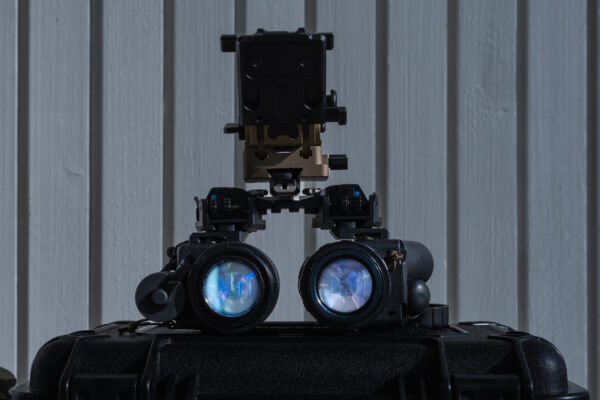FY15 was not without its challenges for Epwin but the company delivered some uplift in underlying profit and EPS, a 50% DPS increase and healthy free cash flow. As well as making further operational business improvements and preparing for a new window systems launch, management also found time to make its first two acquisitions in the year (in October and December), following the IPO in July 2014. We expect all of these elements to impact upon financial performance in FY16 including a more significant step up in profitability.
Exhibit 1: Epwin divisional and interim splits
Year end December, £m |
H1 |
H2 |
2014 |
H1 |
H2 |
2015 |
|
% change H1 |
% change 2015 |
Group revenue |
125.2 |
134.3 |
259.5 |
124.1 |
131.9 |
256.0 |
|
-0.9% |
-1.3% |
Extrusion & Moulding |
67.4 |
75.5 |
142.9 |
69.9 |
76.7 |
146.6 |
|
3.7% |
2.6% |
Fabrication & Distribution |
57.8 |
58.8 |
116.6 |
54.2 |
55.2 |
109.4 |
|
-6.2% |
-6.2% |
|
|
|
|
|
|
|
|
|
|
Group operating profit |
7.3 |
12.2 |
19.5 |
8.0 |
12.1 |
20.1 |
|
9.6% |
3.1% |
Extrusion & Moulding |
5.6 |
11.0 |
16.6 |
7.2 |
10.5 |
17.7 |
|
29.6% |
6.6% |
Fabrication & Distribution |
2.3 |
2.2 |
4.5 |
1.6 |
2.6 |
4.2 |
|
-31.9% |
-6.7% |
Group costs |
(0.6) |
(1.0) |
(1.6) |
(0.8) |
(1.0) |
(1.8) |
|
32.7% |
12.5% |
Extrusion & Moulding: This division primarily comprises Epwin’s window system, roofline and rainwater goods extrusion activities, to which were added Vannplastic (Ecodek wood plastic composite decking products, October) and Stormking (glass reinforced plastic building products, December). H1 trading was characterised by good EBIT margin and profit progression driven by a combination of sales mix, input price benefits and operating efficiencies flowing from actions taken in FY14. The normal seasonal pattern of higher revenue and profit inH2 came through, though this fell modestly short of prior year levels. Market demand levels were certainly more subdued in H2 and our sense is that revenue progress in roofline/rainwater goods was offset by slower window system volumes. We would normally expect this relative mix change to be beneficial to margins, but this may have been partly countered by activity levels in the more price competitive newbuild housing segment. Softer window system sales may have partly reflected the planned introduction of the new Optima profile (replacing the 15-year-old Profile 22 system) in 2016. We are not aware of any direct FY15 P&L impact arising from the development and launch preparation for Optima. It formally launched in April 2016 and the conversion of existing Profile 22 fabricator customers is underway. Epwin is continuing with its multi-brand window system strategy (ie Spectus, Swish and now Optima too).
Note that Ecodek contributed revenue and PBT of £0.7m and £0.1m respectively in H215. Stormking was acquired at the year end. (On a last reported basis, the two acquisitions together generated annual revenue and PBT of £31.2m and £5.1m.) These acquisitions broadened the product portfolio and added additional materials/process expertise while staying close to the company’s functional, low maintenance building products core.
Fabrication & Distribution: This division comprises downstream manufacture of glass sealed units and finished windows and doors (using profiles from Extrusion) and multi-channel B2B distribution of these and other group finished products.
After a relatively weak H1 operationally and financially, F&D performance improved in H2. To some extent this will have been seasonal and also reflects the absence of some unquantified costs of re-balancing capacity in H1. Production volume volatility was the root cause of the H1 issues (particularly with regard to social housing project demand, which can be lumpier and has generally been weaker than in the newbuild and even residential RMI sectors). Epwin has taken steps to address this issue by strengthening the management team, with a more integrated structure across individual business units. Having undertaken some site consolidation activity in 2014, this division currently has seven fabrication sites (by specialism: windows x4, glass sealed units x2, doors x1). As well as some interdependencies here, there are other divisional relationships with distribution outlets and, at group level, with window systems profiles supplied by E&M. The benefits of greater integration include better plant utilisation and material flows by co-ordinating manufacturing operations internally and improved customer service externally. To facilitate this, Epwin is investing further in equipment and also IT to link sites together and increase production flexibility across them. Alongside this, expanded sales resource latterly (including commercial, distribution and trade hires) is designed to capture the full benefits of integration by pulling through increased volumes. We believe that the scope for this strategy to have had a material impact on H215 trading performance was limited but will increase as implementation progresses. Consequently, we conclude that a more stable production environment and reduced cost base together with an improved product mix sold through group distribution activities contributed to improved H2 profit. Note that H215 EBIT exceeded that in both half years in FY14, from a lower revenue base.
Investment and dividend growth with good underlying cash flow
At the end of FY15, Epwin had net debt of £14.4m compared to a modest net cash position a year earlier. In headline terms, this was the product of £12m free cash inflow less £6.7m dividend payments and almost £21m spent on acquisitions. Looking further into the detail:
■
Good cash conversion – trading cash flow as a percentage of EBITDA rose to 93% versus 81% in FY14. While reduced exceptional cash outflows and the absence of a private company management charge benefited FY15 relatively, £1.1m higher EBITDA and £0.5m lower working capital outflow (to just £0.7m for the year) also contributed to this outturn.
■
Interest, tax and dividends, in aggregate, more than doubled to £9.5m in FY15 (FY14: £4.4m).The lion’s share of this was due to a full year dividend effect, having only made a maiden interim payout in 2014, during which the company’s IPO took place. Otherwise, the higher cash tax outflow was partly offset by lower interest costs.
■
Capex – a step up in net investment (from £5.6m to £9m) reflected the development of a new window system (ie Optima) and spending on new extrusion machinery and tooling. We believe that this accounted for around half of total FY15 capex.
■
Acquisitions – the initial cash consideration paid for Vannplastic (October, £5.2m, 70% cash) and Stormking (December, £27m, 75% cash) came to £20.9m in total, net of cash acquired. (NB acquisition-related fees of £0.6m are included in our trading cash flow figure.)
In outlook terms, we are projecting a 30% increase in EBITDA in FY16 chiefly due to acquisitions but also a larger working capital outflow, partly reflecting a relatively favourable starting position (and cash conversion of c 86%). Higher cash interest and tax payments naturally follow FY15 acquisition activity also, while capex is expected to sustain the higher levels seen in FY15 (with the roll out of Optima and selective investment in F&D). The net result of these items is our free cash flow expectation of £14m (+£2m versus FY15), which funds almost £9m of dividend cash payments. Consequently, in the absence of further acquisitions, we expect net debt to end FY16 at c £9m and for Epwin to be effectively ungeared one year further out. Note, our model includes c £1.5m deferred consideration cash outflow in FY17.














